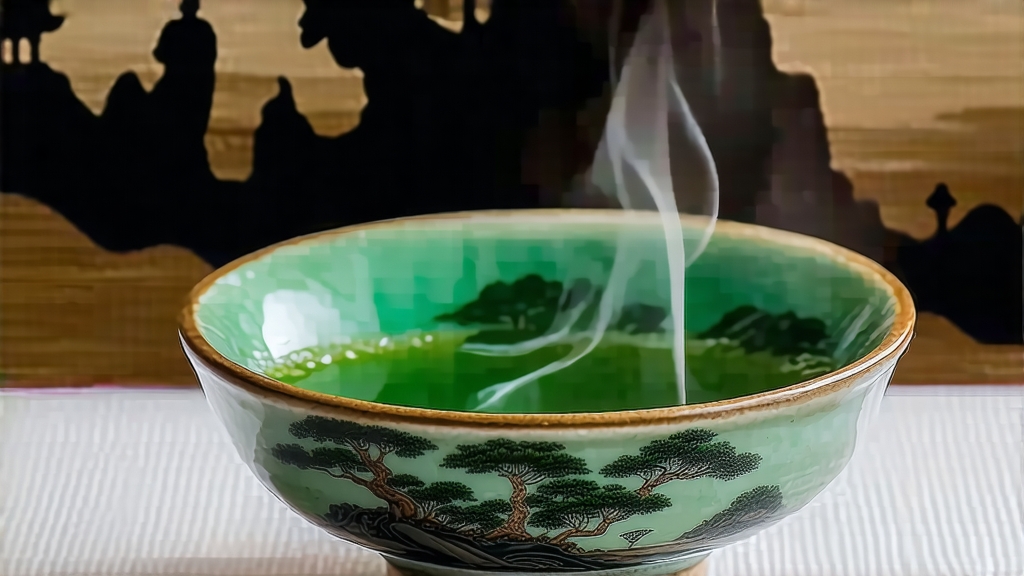
High in the mist-curtained Wuyi Mountains of northwest Fujian, a six-tea-bush grove clings to a narrow fissure in the igneous rock. These wizened shrubs—known simply as the “mother trees”—have lent their name to China’s most mythic oolong: Da Hong Pao, literally “Big Red Robe.” For 350 years their leaves were reserved for emperors, scholars and, legend claims, a Ming-dynasty queen whose life they saved. Today the original grove is protected by armed guards and UNESCO World-Heritage status; only 20 g of leaf are harvested every decade, auctioned for more than gold. Yet the name Da Hong Pao no longer refers only to those relic plants; it has become a cultural banner under which a family of cliff-grown Wuyi oolongs marries volcanic terror with human fire-craft. To understand Da Hong Pao is to taste the dialogue between Jurassic rock and Song-dynasty ingenuity.
History: From Imperial Tribute to Global Icon
The first written record appears in 1839, but oral lore pushes the story back to 1385, when a Ming scholar returning from the capital is said to have draped his crimson court robe over the bushes in gratitude for their healing tea. The Qing court institutionalized the harvest as tribute, and Republican-era tea merchants carried compressed “bricks” of Da Hong Pao along the Tea Horse Road to Tibet. After 1949 the mother trees were nationalized; in 1972 Mao Zedong gifted 200 g to U.S. President Nixon, catalyzing modern cult status. Since 2006 no leaf has been plucked from the originals, yet vegetative cuttings (qi cai) taken in the 1980s have populated 4,000 ha of the Wuyi scenic zone, ensuring that the legend—if not the literal leaf—remains accessible.
Terroir: The Cliffs That Sing
Wuyi’s Danxia landform lays bare 400-million-year-old red tuff, quartz and granite. Daytime cliff faces reach 50 °C, while night-time mountain streams drop to 18 °C; the 15 °C diurnal shock forces the tea bush to thicken cell walls, concentrating aromatic oils. Thin, mineral-rich soils impart a signature “rock rhyme” (yan yun)—a tactile vibration on the tongue likened to licking wet stone after rain. Six officially protected valleys—Nine-Dragon Gorge, Cloud Nest, Ghost Cave, Horse-Head Rock, Tiger-Running Spring, and the 800-m-high Heavenly Heart—produce the micro-lots most coveted by connoisseurs.
Cultivars: Bloodlines of the Red Robe
True Da Hong Pao is not a single cultivar but a blend of four genetically distinct clones propagated from the mother trees:
- Qi Dan – the “miracle red,” prized for lilac top notes.
- Bei Dou – “North Star,” cold-resistant, yielding a peppery finish.
- Que She – “sparrow tongue,” a late-sprouting variety with honeyed body.
- Da Kai Mian – “wide face,” broad leaves that absorb charcoal smoke.
Modern market labels often list “pure” or “blended” Da Hong Pao; the former is a single cultivar, the latter an artful marriage designed to balance floral head, fruity heart and mineral base.
Craft: The Eighteen-Step Dance of Fire and Time
Plucking: Only the middle three leaves are taken on clear April mornings when the dew just lifts.
Withering: Leaves are spread on bamboo racks inside cliff-side caves where mountain breeze reduces moisture to 65 % within three hours.
Shaking: The most athletic step—five rounds of tossing leaves in 1.2 m diameter rattan trays bruises edges to initiate oxidation while preserving green centers. Masters listen for a rustle likened to “metal coins dropping on porcelain.”
Fixation: A 250 °C wok kill-green halts oxidation at 30 %, locking in amber polyphenols.
Rolling: Dual-action machines twist leaves into the traditional “dragonfly head” shape, tight enough to survive three years of aging yet loose enough to unfurl in hot water.
Roasting: The soul of Wuyi craft. Using local Masson-pine charcoal, leaves undergo three firings over 12 months: initial “water roast” at